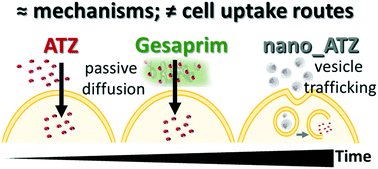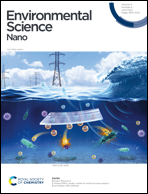High-throughput transcriptomics reveals the mechanisms of nanopesticides – nanoformulation, commercial formulation, active ingredient – finding safe and sustainable-by-design (SSbD) options for the environment†
Abstract
Nanoformulations are developed to offer controlled release of active ingredients (a.i.) and thus aim to keep functionality while having a smaller environmental footprint. This means that nanoformulations aim to comply with the safe and sustainable by design (SSbD) concept, as a part of (re)designing to reduce their risks. However, the toxic effects of nanoformulations, particularly to non-target organisms, are poorly known, and even more so at the mechanistic level. The aim of the present study was to investigate the possible mechanisms of toxicity of atrazine when delivered as a nanoformulation of atrazine (nano_ATZ), a commercial atrazine-based formulation (Gesaprim), and the pure a.i. (ATZ). A high-throughput gene expression microarray (4 × 44 K) was used to assess transcriptomics in Enchytraeus crypticus (non-target species). Organisms were exposed, in soil, to equitoxic reproduction effect concentrations (EC10 and EC50) for 3 and 7 days. Results showed activation of genes involved in both general and well-known mechanisms of detoxification (e.g. cytochrome P450 and GST) for all the atrazine forms. Unique effects of nano_ATZ on transcripts linked to secretion, translocation and vesicle trafficking suggested that differentiated – nano-specific – uptake and/or cellular transport might be taking place. This study on the transcriptomics of a nanoformulation, the first so far, suggested differentiated mechanisms of toxicity among the nanoformulation, the a.i. and the conventional pesticides, shedding light on the issues of safe and sustainable-by-design (SSbD) for the agrochemical industry.



 Please wait while we load your content...
Please wait while we load your content...